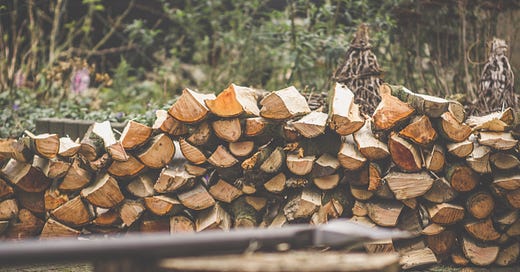Photo by Sven Brandsma on Unsplash
This is a tiny bit of a personal pivot, or rebranding, or whatever you’d call it.
I’ve been writing about fitness on the internet for a number of years, in a variety of forms on a variety of sites. The general thrust has been about convincing regular people to eat better, get strong, and be the best version of themselves they can be.
That’s all still true. But I want to ratchet this focus down a bit: to the everyday athlete.
What is an Everyday Athlete?
An everyday athlete is someone who participates in the sport of life. You’re not training for a meet, or the local softball league, or the next marathon. Everyday athletes train to be able to go through life expressing high levels of strength, conditioning, power, and endurance whenever it’s needed. They’re the ones who help you move furniture, the ones you call when you need a hand with landscaping.
If this sounds like who you are now, or someone you want to be come, then you’re in luck. For anyone else who doesn’t feel like that, don’t worry. I’m going to continue writing the same sorts of content with a generalist approach to fitness, nutrition, and recovery; continuing to talk about and reinforce the basics of health and fitness.
Specialization is for Insects
What I’m leaving by the wayside is any attempt to consider specialization. Comparing strength levels to a powerlifter, physique to a bodybuilder, running pace to a marathoner, or anything of the sort just isn’t practical for an everyday athlete. You need to be able to do all these things with decent proficiency; and if you’re also living a life outside of the gym, you just won’t end up an expert in any one thing.
Unless you specialize. And that’s not me, and not what I’ll be writing about.
And that’s better for you, the reader too. If you want to specialize, talk to coaches and trainers who, ahem, specialize in specialization.
Training an Everyday Athlete
The Five Rules of Training represents the core philosophy of training everyday athletes. The stages below are part of the initial work towards putting this philosophy into practice:
The Foundation
The Foundation is stage one of training. This is where everyone begins. The focus at this stage is primarily on preparedness and resilience.
Here we are not “training” in the true sense of the word. It is more about putting in the right kinds of work to build a wide breadth of physical skills, increasing resilience by learning what it feels like to deal with different types of adversity and discomfort, and increasing overall work capacity so we can do more in the same amount of time.
Current Articles
Older Articles
The Frame
The Frame sits above our Foundation, these two things making the base upon which an everyday athlete is built.
This is where we focus a bit more on internal makeup - nutrition, recovery, and mobility. Work is put towards correct nutrition for ideal health and body composition, on proper sleep and activities to alleviate stress, and on freeing our movements from aches, pains, and other restrictions.
Current Articles
Framing Recovery (forthcoming)
Older Articles
The Structure
Finally, the Structure is the primary phase of training an everyday athlete, and where most of the time will be spent as the years go on. Your Structure is build upon both the Foundation and the Frame. If either are shoddy, or are not properly maintained, your Structure will be at risk.
This is where we train our primary fitness attributes:
Strength is your ability to output force with your own body. This can be moving external load, or moving your own body in space.
Power is a specialization of strength. It is your ability to express strength quickly - jumping, throwing, or anything where you’re outputting force at a rapid rate.
Conditioning is a your ability to output energy. Improving your energy output requires a healthy heart and lungs, but also muscles with enough endurance to continue to do work when they fatigue.
Endurance is a specialization of conditioning. It is your ability to output energy for long periods of time - long distance running, high rep pushups, and similar.
There are, of course, many secondary attributes such as balance, flexibility, agility, or coordination, but they come along as a package deal assuming a proper Foundation and a proper training plan.
Current Articles
Building Strength (forthcoming)
Building Conditioning (forthcoming)
Building Power (forthcoming)
Building Endurance (forthcoming)
Older Articles
Wrapping Up
This post is more a statement of intent than anything practical or useful. Over the next few weeks I’m going to spend time talking about building your Foundation, Frame, and Structure before going into specific programs and recommendations.
Stay tuned!




